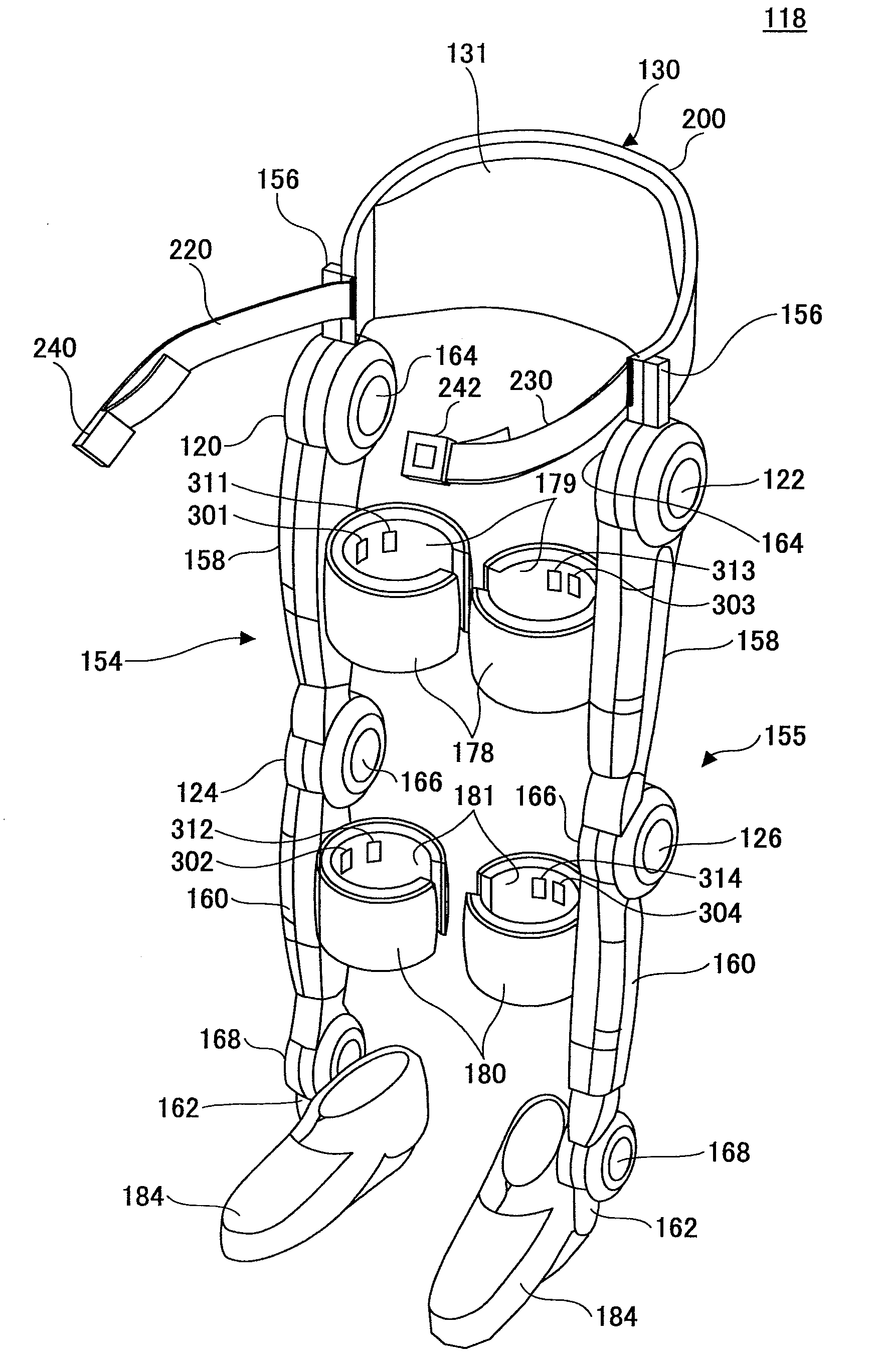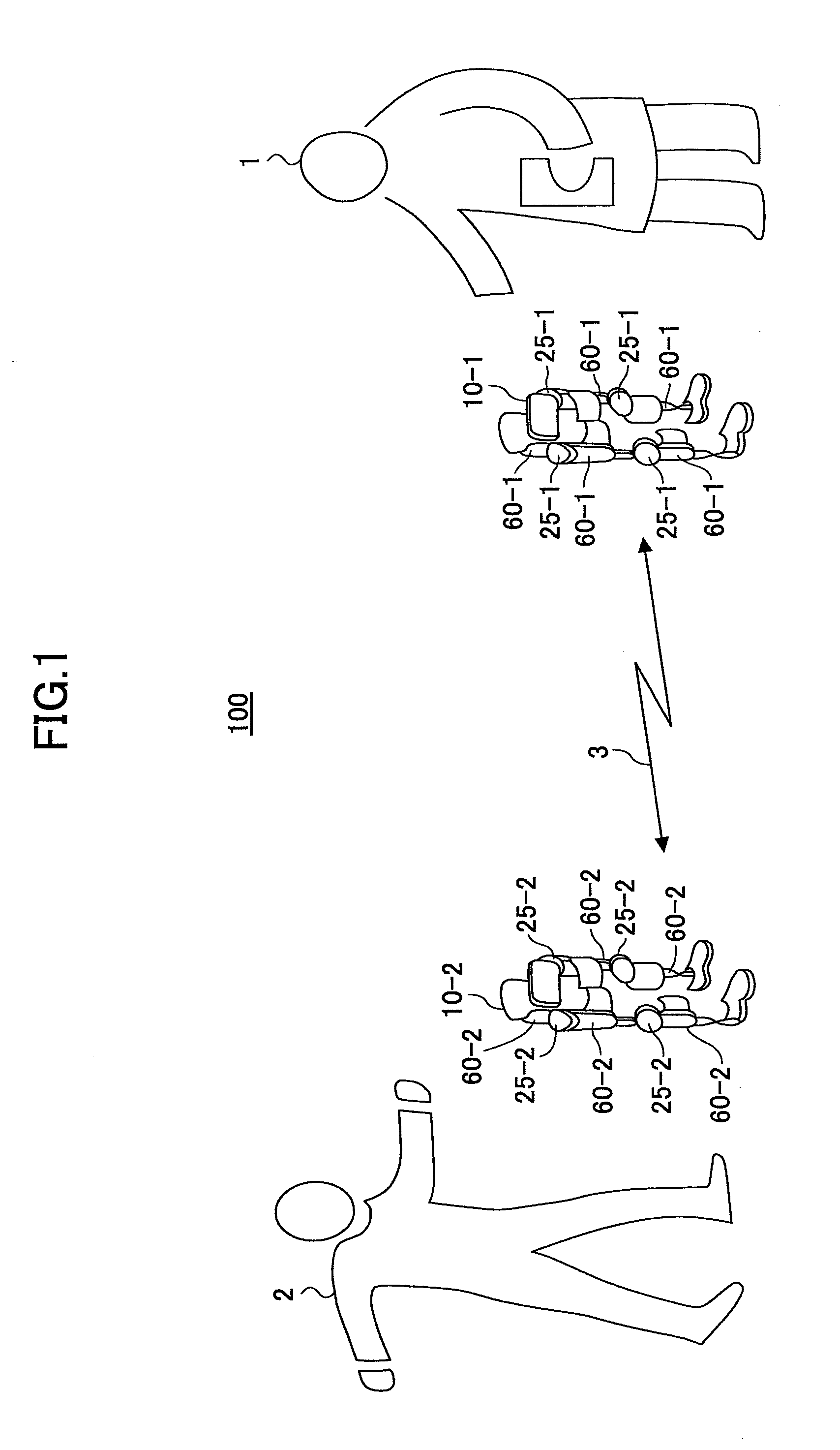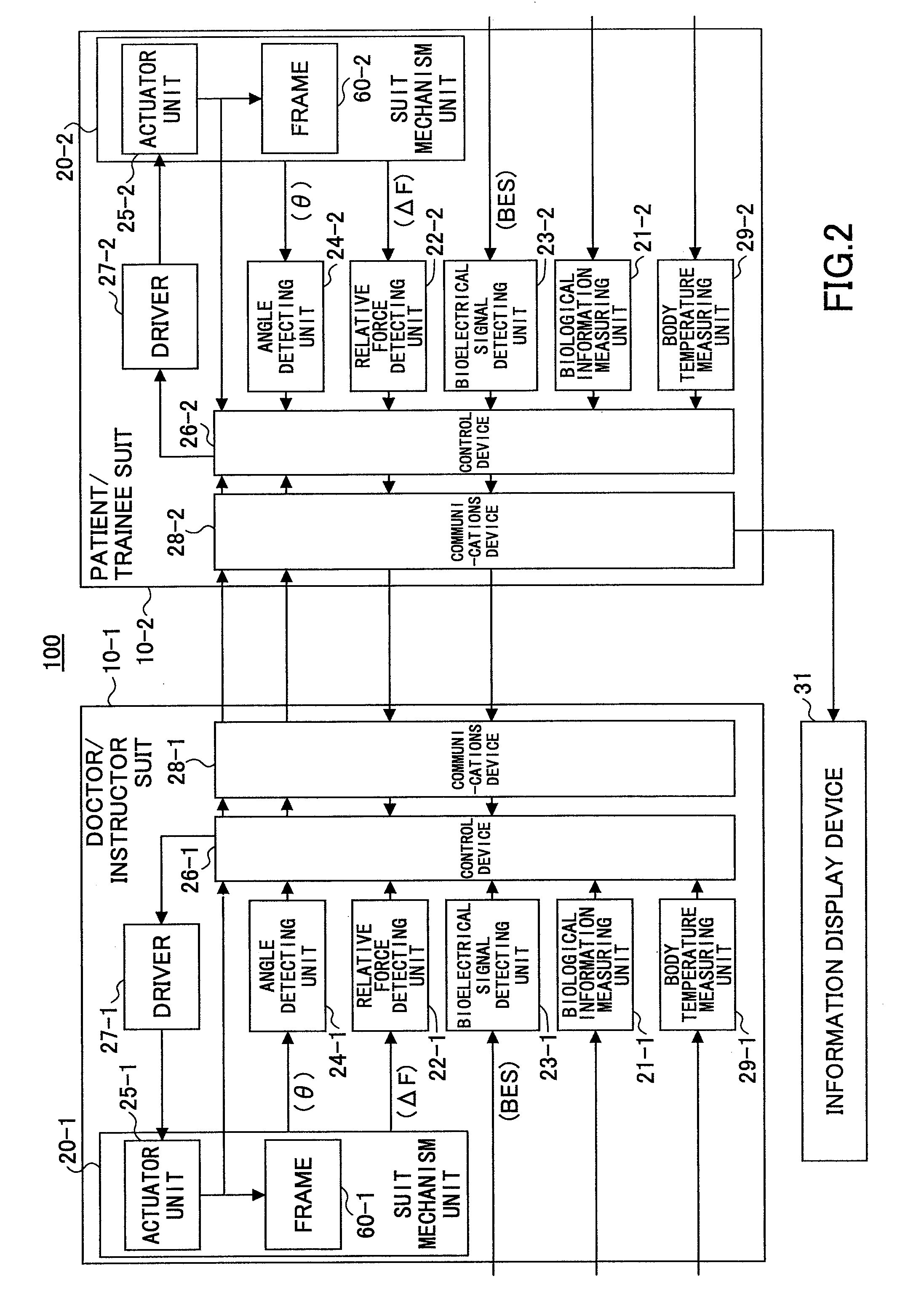Motion-assist system of wearable motion-assist device, wearable motion-assist device, and motion-assist method of wearable motion-assist device
a technology of motion assistance and wearable motion, which is applied in the field of motion assistance, can solve the problems of difficult to effectively conduct rehabilitation, doctor cannot objectively know (recognize) the state of the patient, and cannot objectively recognize the movement of the patient's body or the actual movement of the patient's body
- Summary
- Abstract
- Description
- Claims
- Application Information
AI Technical Summary
Benefits of technology
Problems solved by technology
Method used
Image
Examples
first embodiment
[0082]A description is given of a motion-assist system 100 according to the present embodiment, in which the rehabilitation is conducted with the doctor 1 wearing the wearable motion-assist device 10-1 and the patient 2 wearing the wearable motion-assist device 10-2.
[0083]In the motion-assist system 100, the wearable motion-assist device 10-1 acting as the master and the wearable motion-assist device 10-2 acting as the slave are configured to interact with each other by bidirectional communication performed via the network 3.
[0084]The wearable motion-assist device 10-1 worn by the doctor 1 includes a communications unit for sending detection signals (detection data) of physical phenomena such as joint angles and output torque values of the wearable motion-assist device 10-1. The detection data output from the wearable motion-assist device 10-1 is sent to the wearable motion-assist device 10-2 via the communications unit and the network 3.
[0085]The wearable motion-assist device 10-2 ...
second embodiment
[0217]Next, a description is given of a motion-assist system according to a second embodiment of the present invention.
[0218]In the first embodiment, bi-directional communication is performed between the wearable motion-assist device 10-1 of the doctor 1 and the wearable motion-assist device 10-2 of the patient 2. However, in the present embodiment, the wearable motion-assist device 10-1 does not send out any data; the wearable motion-assist device 10-1 only receives data from the wearable motion-assist device 10-2.
[0219]When the wearable motion-assist device 10-1 of the doctor 1 does not send out any data including the respective detection signals, the wearable motion-assist device 10-1 and the wearable motion-assist device 10-2 will have a master-slave relationship. That is, when the patient 2 moves the wearable motion-assist device 10-2, the motions are directly applied to the wearable motion-assist device 10-1.
[0220]FIG. 10 is a flowchart for describing a control process 2 perfo...
third embodiment
[0237]Next, a description is given of a motion-assist system according to a third embodiment of the present invention.
[0238]In the second embodiment, the wearable motion-assist device 10-1 of the doctor 1 does not send out data, but the wearable motion-assist device 10-2 of the patient 2 sends data to the wearable motion-assist device 10-1 of the doctor 1.
[0239]In the present embodiment, the wearable motion-assist device 10-2 of the patient 2 does not send out data (excluding monitoring data), but the wearable motion-assist device 10-1 of the doctor 1 sends data to the wearable motion-assist device 10-2 of the patient 2.
[0240]FIG. 12 is a flowchart for describing a control process 3 performed by the control device 26-1 of the wearable motion-assist device on the doctor. FIG. 13 is a flowchart for describing a control process 3 performed by the control device 26-2 of the wearable motion-assist device on the patient.
[0241]First, a description is given of operations of the wearable mot...
PUM
 Login to View More
Login to View More Abstract
Description
Claims
Application Information
 Login to View More
Login to View More - R&D
- Intellectual Property
- Life Sciences
- Materials
- Tech Scout
- Unparalleled Data Quality
- Higher Quality Content
- 60% Fewer Hallucinations
Browse by: Latest US Patents, China's latest patents, Technical Efficacy Thesaurus, Application Domain, Technology Topic, Popular Technical Reports.
© 2025 PatSnap. All rights reserved.Legal|Privacy policy|Modern Slavery Act Transparency Statement|Sitemap|About US| Contact US: help@patsnap.com



